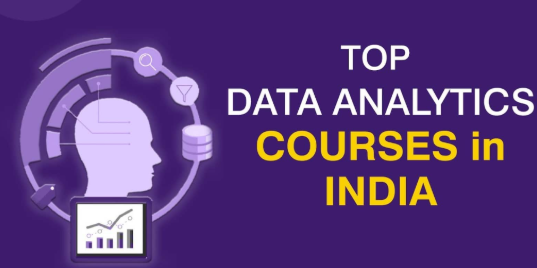What are the different types of tools in Data Analytics?
What are the different types of tools in Data Analytics?

In the ever-evolving field of data analytics, the right tools can significantly enhance the ability to decipher complex data, uncover patterns, and inform strategic decisions. Professionals looking to sharpen their analytical skills can benefit immensely from a data analyst course, where they can learn to navigate various tools that are fundamental to the trade. This article delves into the different types of data analytics tools that are essential for modern data professionals.
Data Collection Tools
Before data can be analyzed, it must first be collected. Data collection tools are designed to gather data from various sources, including databases, web pages, enterprise systems, and more. Tools like web scrapers can automate the process of collecting data from websites, while APIs (Application Programming Interfaces) are used for extracting data from online services. IoT (Internet of Things) devices also serve as data collection tools by providing real-time data from sensors and other connected devices.
Data Preparation Tools
Once data is collected, it must be cleaned and organized—a process known as data preparation. Tools that assist in data preparation are critical as they help ensure the accuracy and usability of data. These tools typically offer functionalities for cleaning data, dealing with missing values, and transforming data formats. Popular data preparation tools include:
- Microsoft Excel: Known for its versatility and accessibility, Excel offers various features for sorting, filtering, and organizing data.
- Alteryx: Provides a user-friendly interface for data blending and advanced analytics, making it ideal for preparing large datasets.
- Talend: Known for its data integration capabilities, Talend helps in refining and preparing data for analysis.
Data Analysis Tools
Data analysis tools are at the core of data analytics, enabling analysts to derive meaningful insights from data. These tools vary widely in complexity and function, from simple statistical tools to complex machine learning platforms.
- Python and R: These programming languages are fundamental for data analysis due to their robust libraries and frameworks. Python’s Pandas and Scikit-learn, along with R’s ggplot2 and dplyr, are particularly popular for statistical analysis and data visualization.
- SPSS: An easy-to-use software for performing complex data manipulation and statistical analysis.
- Stata: Widely used in academic circles, Stata offers extensive capabilities for data analysis, including panel data analysis and time-series forecasting.
Data Visualization Tools
Data visualization tools help translate analytical results into understandable and visually appealing formats. Effective visualization is crucial for communicating data insights clearly and effectively.
- Tableau: Renowned for its powerful and intuitive visualization capabilities, Tableau allows users to create a wide range of interactive and shareable dashboards.
- Power BI: Integrates seamlessly with Microsoft products and provides comprehensive tools for creating complex visualizations and business intelligence reports.
- Qlik: Offers intuitive data visualization capabilities along with associative analytics that uncover data relationships across multiple sources.
Big Data Processing Tools
With the rise of big data, tools capable of processing and assessing large volumes of data are essential.
- Hadoop: An open-source framework that enables the distributed processing of massive data sets across various clusters of computers.
- Apache Spark: Known for its speed and ease of use, Spark extends Hadoop MapReduce for faster analytics, including real-time data streaming and complex algorithms.
Machine Learning Tools
As predictive analytics becomes more integral to data analysis, machine learning tools are increasingly in demand.
- TensorFlow: An open-source library designed by Google to facilitate machine learning and deep neural network research.
- SAS: Offers advanced analytics, multivariate analysis, business intelligence, and data management capabilities.
Integrating Tools into a Data Analytics Workflow
Professionals seeking to successfully integrate these tools into their workflow can benefit greatly from a data analytics course in Mumbai. Such courses not only teach how to use these tools effectively but also how to apply them in real-world scenarios, providing an in-depth understanding of when and how to use each tool for maximum impact.
Conclusion
The diverse array of tools available for data analytics provides professionals with the resources needed to tackle any data challenge. By understanding and mastering these tools through a Data Analytics Course in Mumbai, analysts can enhance their ability to extract, analyze, visualize, and make predictions from data, driving data-driven decisions that can significantly impact their organizations.
`
Business name: ExcelR- Data Science, Data Analytics, Business Analytics Course Training Mumbai
Address: 304, 3rd Floor, Pratibha Building. Three Petrol pump, Lal Bahadur Shastri Rd, opposite Manas Tower, Pakhdi, Thane West, Thane, Maharashtra 400602
Phone: 09108238354
Email: [email protected]




